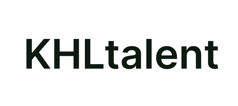What happens to your job application once you click submit?
Land more interviews with these three steps.
CAREER


A common misconception about the hiring process is that artificial intelligence (AI) is the gatekeeper reviewing job applications and making rejection decisions instead of humans. For most companies, this isn’t the case.
People teams are often operating with an HR technology stack that is mediocre at best—without the additional capabilities of cognitive computing. Customer relationship management (CRM) on the people side comes in the form of an applicant tracking system (ATS). An ATS keeps track of candidates who apply and passive candidates that recruiters engage.
Every inbound application starts in the “applicant review” stage. This is where applications stay unless a recruiter or sourcer makes the decision to move the candidate forward (usually to a phone screen) or decline the candidate (usually accompanied by a rejection email). Sometimes, applications stay in the applicant review stage indefinitely. Meaning, you probably won’t hear back from the company after applying. This is usually the result of the recruiter closing the requisition without declining every applicant or a pause in the search due to shifting business priorities.
As an applicant, your goal should be to move your application from review stage to hiring screen as soon as possible. Depending on the sector, if you haven’t heard anything positive within about three-four weeks of applying, it’s unlikely your application will move forward.
Here are three tips to increase your chances of moving to the interview stage.
1. Lead with LinkedIn
LinkedIn is a shortcut for recruiters; it’s standardized. Reviewing applications takes a lot of time and when reviewing 50+ applications, it’s easier to find what you’re looking for through a quick scan of LinkedIn vs. reading through custom resume formats. This doesn’t mean recruiters don’t read resumes. Scan your resume for readability. Include ample white space, short bullets under each job description, specific software experience, and quantitative metrics.
2. Show impact through your resume
I’ve reviewed thousands of resumes and the biggest mistake jobseekers make is including too many fluffy words and not enough numbers. Include quantifiable action statements below each career experience (4-6 bullets max) instead of descriptive sentences from the job description. These bullets need to be high impact. Think of your top accomplishments across every role; examples of how you added time, money, or publicity to the company bottom-line.
Added $X in top-line revenue through proactive customer relationship management.
Improved X process, reducing employee time spent on X across the company.
Exceeded monthly metrics around customer satisfaction, maintaining a X% CSAT score.
Led a cross-functional team and formalized the internship hiring process, resulting in a more diverse intern group
Managed relationships with X number of customers, serving as the point of contact for customer support
3. Ground your search in your experience
If you’re looking to land a new role expeditiously, narrow your search. It’s easier to land a new role if it’s in an area you have prior experience. When looking at role title, company size, and industry, apply for jobs where you have relevant experience in two of the three areas.
The recruiter needs to be able to highlight how your experience aligns to the role to make a compelling case to the hiring manager. Recruiters understand that not everyone is looking for a role where they can do the exact same work that they’ve already done, so you don’t have to have all three. The area you don’t have experience in will fit nicely into your pitch—along with a callout of the company mission—on why you’re interested in the role.
It’s easiest to land a role with the same or similar title (or one level of seniority up) as your previous role (e.g., Business Analyst to Revenue Analyst or Senior Analyst). If you’re working at a company with 200 people and applying to companies with 5,000 employees, be prepared to speak about the benefits larger companies offer. Lastly, when moving between industries, call out similarities between the work (e.g., business functions supported or client experience: SMB, mid-market, enterprise).
Track your progress
With these three steps, you'll be well on your way to securing your next position. As you apply to jobs, track your application response rate. If you’re receiving less than a 15-20% response rate from submitted applications (i.e., at least 15 interviews for every 100 applications submitted), you may need to further adjust your resume or the types of roles you are targeting.
Curious about pivoting to a new industry or career? Here are eight unique programs offer skills training programs for Phoenix learners interested in careers from tech sales and customer success to semiconductor technicians.
